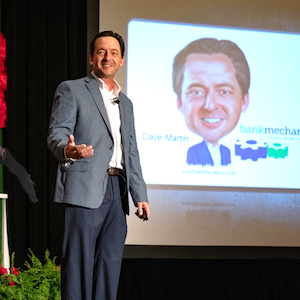 |
 |
Let he who would be moved to convince others, be first moved to convince himself. » Thomas Carlyle
Come On, Get Happy
I recently read a compelling column in the NY Times by Jay Goltz. He’s the owner of several small businesses, and he shared lessons learned in running successful operations.
I chuckled while reading it because he tackled a subject I preach about often… but not always in as blunt a fashion.
Goltz tells the story of an MBA grad visiting one of his businesses. When the young man commented that his employees seemed like a happy bunch, Goltz asked him to guess what was the secret to his happy workforce.
The young man replied, “I’m sure you treat them well.” Mr. Goltz said that he thought that he did, but that was only half of the secret. The other half was that he fired all of the unhappy employees. Goltz explains that people initially think he is kidding when he makes that comment. But he isn’t.
Goltz emphasizes that this is not his preference, but he suggests that there comes a time when you are robbing a business of precious time and energy by allowing chronically unhappy employees to stay on. He also expresses amazement at how entire departments can be “taken hostage” by even one unceasingly unhappy person.
Over the years, I’ve shared with groups one of the most important lessons I learned in my first branch manager job. I learned it while dealing with the grouch who was my assistant manager. That lesson is that tolerating bad attitudes is like watering weeds. Pretty soon, that’s all you’ll see around you.
Being perpetually unhappy doesn’t make someone a bad person, but it does make him/her a bad fit. Allowing that person to torpedo the morale of the entire team is a dereliction of a manager’s duty.
Years ago, an HR friend gave me her simple philosophy for dealing with bad attitudes: “If you can’t change the person, you have to change the person.” Now, no ethical manager takes something as serious as removing a team member lightly. But I’d suggest that no good manager takes the long term damage to their business caused by incurable bad attitudes lightly, either.
At the end of the day, folks who are happy in their jobs deliver better service to customers. Folks who are unhappy seldom do.
A conversation may well be all it takes to change a person. But smart managers know that good attitudes and happy workplaces are serious business. They make sure their teams know it, too.
Getting the Message
Every now and then, I’ll come across a fact or statistic that elicits a “Well… duh” response while also serving as a useful reminder. I read such a factoid this week.
In an article about the challenges consumer goods manufacturers are facing in this recession, a researcher pointed out that over the past four years, when a company’s advertising reach exceeded its market share by 50% or more, market share stayed the same or rose 64% of the time. (My eyes started to glaze-over reading that as well.)
But the gist of that finding is simple. All things equal, increasing the awareness of a product beyond its current status more often than not leads to increased sales. (I will pause now to allow that shocking newsflash to sink in.)
Yes, it sounds a little ridiculous to even have to make that point. We all know that the more effectively we market our products, the more business we generate… right?
Sadly, lots of folks seem to be operating under the model that marketing is simply a department within their bank. It's their job to get branches and products noticed. So, if customer awareness of their branches or products is low, that's someone else's responsibility… right?
I like to ask individual branch teams if they think that they have the best-known branch in their individual target market. That doesn't necessarily mean they have the best-known brand in all their bank's markets. They have little control of that.
What I’m asking is: Within their target market (whether that be a county, city, city block, or grocery store), which branch and branch team communicates most effectively with potential customers? Who do customers know best? They have a considerable amount of control over that.
The statistic cited before referred to advertising "reach," not "expense." And few things actually reach customers more or create more word-of-mouth advertising than personal gestures, hand-delivered marketing materials, and face-to-face conversations.
What low-dollar, high-impact marketing can you and your team utilize to gain a disproportionate share of customer awareness this month?
Here's one idea. It’s a fair bet that no one you see today in a grocery store or coffee shop or baseball field or, oh…bank lobby has had a friendly chat with a banker today.
Strive to change that.









